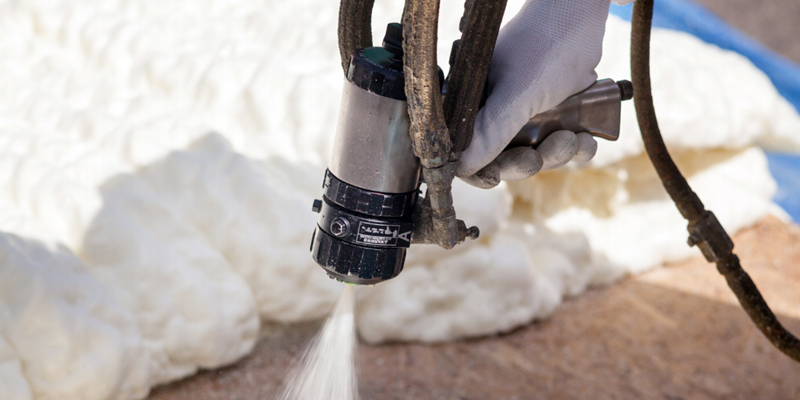In the ever-evolving world of polyurethane chemistry, the focus has been shifting towards more environmentally friendly solutions, especially in the realm of foams. One of the major breakthroughs in this area is the development of Hydrofluoroolefin (HFO) catalysts, which are now being used to create polyurethane foams with significantly lower global warming potential (GWP) compared to traditional blowing agents such as HCFCs and HFCs.
What Are HFO Catalysts?
HFO catalysts are chemical compounds used to promote the formation of HFOs (Hydrofluoroolefins), which are a group of compounds employed primarily as low-GWP blowing agents in polyurethane foam production. Unlike the widely used HFCs (Hydrofluorocarbons), HFOs have much lower GWPs and decompose rapidly in the atmosphere, which reduces their environmental impact.
HFOs are typically used as blowing agents to expand the polyurethane polymer matrix during foam formation, producing lightweight, thermally insulating materials with applications ranging from spray foams to rigid insulation boards and molded foams.
Role of Catalysts in HFO Systems
Catalysts in HFO systems are critical in facilitating the chemical reactions needed to produce high-quality polyurethane foams. These catalysts enable the conversion of polyols and isocyanates into polyurethane, while also controlling the rate of foam rise, cure time, and the physical properties of the foam, such as density and thermal insulation.
In HFO-based systems, the catalyst needs to fulfill specific functions:
- Blowing Agent Activation: In the presence of HFOs, catalysts ensure the activation of the blowing agent, which contributes to the expansion and formation of foam cells.
- Reaction Control: HFO systems often have specific demands on reaction speed and foam structure. Catalysts help control the balance between curing time and the rate of rise, ensuring that foams do not collapse or form inconsistent structures.
- Surface and Mechanical Properties: Catalysts can improve the surface cure of the foam and enhance mechanical properties like rigidity, resilience, and stability during the foaming process.
- Compatibility with Formulation Ingredients: Modern HFO-based polyurethane systems must be compatible with a wide range of polyols, isocyanates, surfactants, and other additives. Catalysts must work efficiently in these complex formulations to ensure optimal foam quality.
Types of HFO Catalysts
While many catalysts used in conventional polyurethane systems (such as amine catalysts, tin-based catalysts, and bismuth-based catalysts) can also be used in HFO-based systems, several new catalysts have been specifically developed for HFO formulations due to the unique chemical nature of these blowing agents.
- Amine-based Catalysts: These are the most commonly used catalysts in polyurethane chemistry, including HFO-based systems. Amine catalysts such as tertiary amines promote the isocyanate-polyol reaction and enhance the foam’s rise. They are often tailored to minimize odor and emissions in the final foam.
- Bismuth-based Catalysts: Bismuth-based catalysts offer the advantage of being tin-free, making them a desirable alternative in formulations requiring more environmentally conscious solutions. They are often used in systems where both rigidity and improved mechanical properties are essential.
- Metal-based Catalysts: These include catalysts like potassium octanoate and other alkali metals, which promote high conversion rates in the foam reaction. These catalysts work particularly well with rigid polyurethane foams and are used to optimize thermal and mechanical properties in HFO-based systems.
Benefits of HFO Catalysts in Polyurethane Systems
- Lower Global Warming Potential (GWP): The use of HFOs in polyurethane foam production significantly reduces the environmental impact of foam products. HFOs have a GWP of less than 1, compared to traditional HFCs and HCFCs, which have much higher GWP values.
- Improved Thermal Insulation: HFO-blown foams typically have better thermal insulation properties than those produced with higher-GWP blowing agents. This makes them ideal for use in energy-efficient buildings, appliances, and automotive applications.
- Enhanced Process Control: With the right catalysts, manufacturers can achieve better control over foam density, cell structure, and curing time, resulting in more consistent and reliable foam products.
- Regulatory Compliance: As regulatory pressure increases globally on the use of high-GWP blowing agents, manufacturers using HFO catalysts are better positioned to meet environmental standards and provide sustainable alternatives for customers.
Challenges in HFO Catalyst Systems
Despite their clear advantages, HFO systems come with a set of challenges that manufacturers must address:
- Compatibility with Existing Equipment: HFO-based systems may require adjustments to existing production equipment, such as mixers, reactors, and curing ovens, to ensure the blowing agent is effectively incorporated into the foam.
- Cost Considerations: While HFOs are a more sustainable option, they can be more expensive than traditional blowing agents. This cost can be passed on to manufacturers and consumers, potentially making the transition to HFO-based systems more challenging for price-sensitive markets.
- Stability and Shelf Life: Some HFO catalysts and formulations may have shorter shelf lives or require more precise handling conditions, especially in terms of storage and temperature control. Ensuring consistent quality across large production runs can require careful monitoring and formulation adjustments.
The Future of HFO Catalysts
As the global push for sustainability in the chemical industry intensifies, HFO catalysts will continue to play a crucial role in shaping the future of polyurethane foams. Advances in catalyst chemistry, formulation optimization, and production technologies are expected to further reduce the cost and complexity of HFO-based systems, making them a viable choice for a broader range of applications.
Ultimately, the transition to HFO-based polyurethane foams represents a win for both the environment and the polyurethane industry. By embracing innovative HFO catalyst technologies, manufacturers can produce high-performance, eco-friendly foam products that meet the needs of modern markets while contributing to a more sustainable future.
Post time: Jan-20-2025


